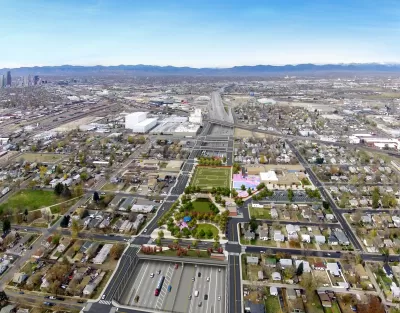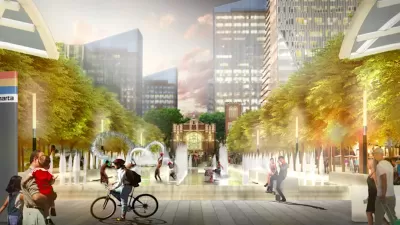The first comprehensive manual for planning, funding, and building a freeway cap is put online for review and comment.

Nearly every major city is contemplating reconnecting neighborhoods divided by a highway built under The Federal Highway Act. Many cities already have one or more parks or civic buildings built over FHWA funded highways. Some of the more notable projects include the Rose Kennedy Fitzgerald Kennedy Greenway (Boston aka “The Big Dig”), the Klyde Warren Park (Dallas), Bartle Hall Convention Center (Kansas City), and Freeway Park (Seattle). However, as cities are again popular places to live, there has been even greater interest in covering the highways that divide and pollute urban neighborhoods. Many of these highways were built in trenches that evoke visions of covering them with parks, civic buildings, or even private development.
Freeway benefits to the surrounding communities include:
- Increased property values
- Increased density and housing
- Increased retail sales
- Increased hotel development and occupancy
- Increased area jobs
- Increased property tax, payroll tax, hotel tax, and sales tax revenue
- Improved park and recreational opportunities
- Improved air quality
However, there is little documentation on how to accomplish these large and daunting projects. This is the circumstance confronting participants of local movements to build over a highway or freeway, and this was the circumstance encountered by the author of a draft book on the subject as he participated in a San Diego movement to reconnect the city’s urban park (Balboa Park) and urban neighborhoods with downtown over Interstate 5. He decided to document what he learned in a guide book. He has put his first draft online to share what he has learned and to source additional information from those who might have useful information to contribute to the effort.
FULL STORY: Book: How to Build a Freeway Cap

Alabama: Trump Terminates Settlements for Black Communities Harmed By Raw Sewage
Trump deemed the landmark civil rights agreement “illegal DEI and environmental justice policy.”

Planetizen Federal Action Tracker
A weekly monitor of how Trump’s orders and actions are impacting planners and planning in America.

The 120 Year Old Tiny Home Villages That Sheltered San Francisco’s Earthquake Refugees
More than a century ago, San Francisco mobilized to house thousands of residents displaced by the 1906 earthquake. Could their strategy offer a model for the present?

Opinion: California’s SB 79 Would Improve Housing Affordability and Transit Access
A proposed bill would legalize transit-oriented development statewide.

Record Temperatures Prompt Push for Environmental Justice Bills
Nevada legislators are proposing laws that would mandate heat mitigation measures to protect residents from the impacts of extreme heat.

Downtown Pittsburgh Set to Gain 1,300 New Housing Units
Pittsburgh’s office buildings, many of which date back to the early 20th century, are prime candidates for conversion to housing.
Urban Design for Planners 1: Software Tools
This six-course series explores essential urban design concepts using open source software and equips planners with the tools they need to participate fully in the urban design process.
Planning for Universal Design
Learn the tools for implementing Universal Design in planning regulations.
Clanton & Associates, Inc.
Jessamine County Fiscal Court
Institute for Housing and Urban Development Studies (IHS)
City of Grandview
Harvard GSD Executive Education
Toledo-Lucas County Plan Commissions
Salt Lake City
NYU Wagner Graduate School of Public Service





























